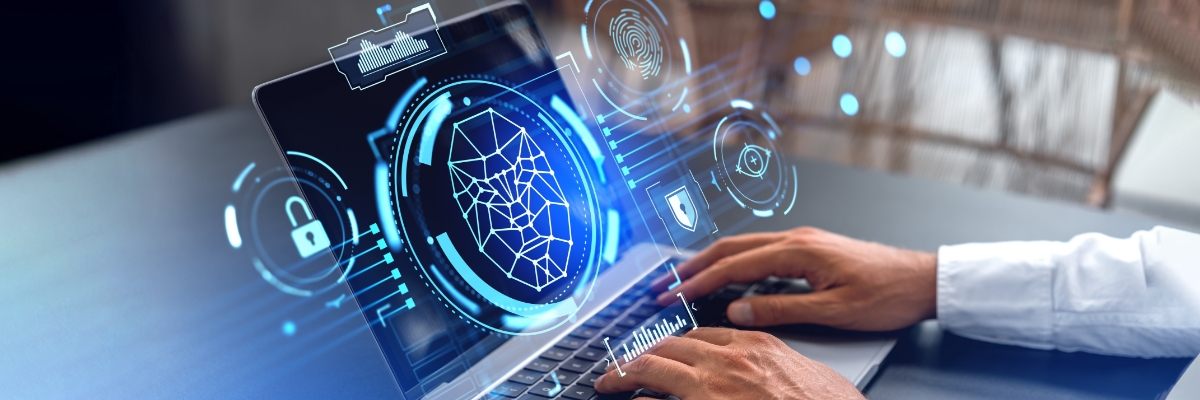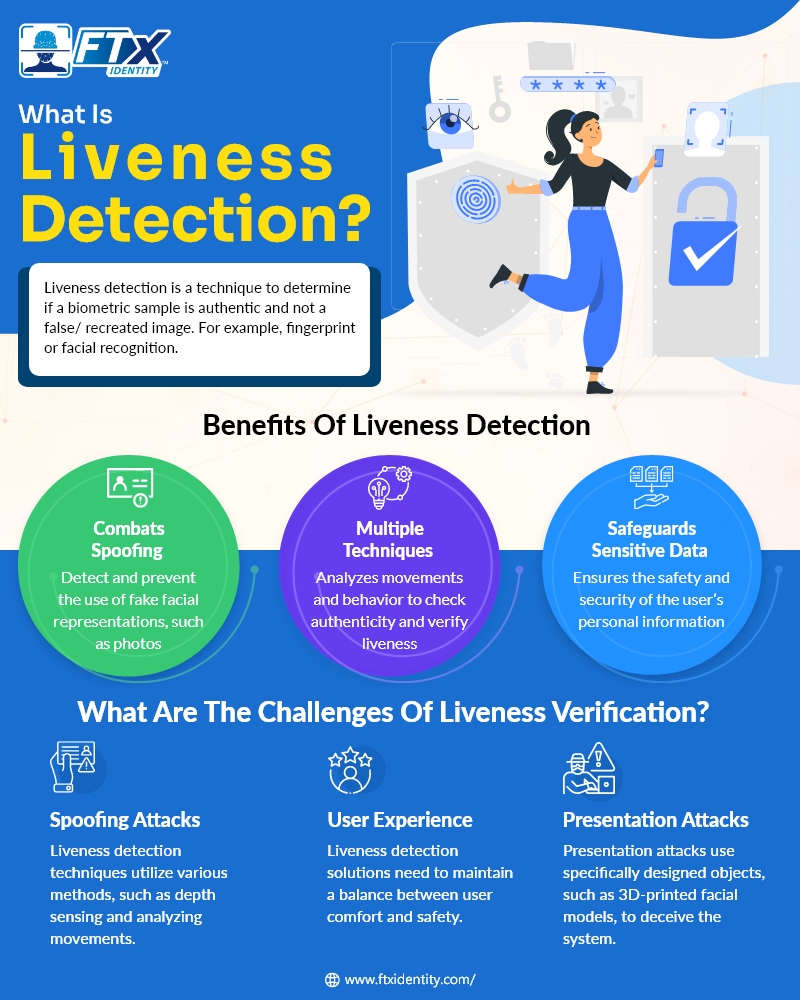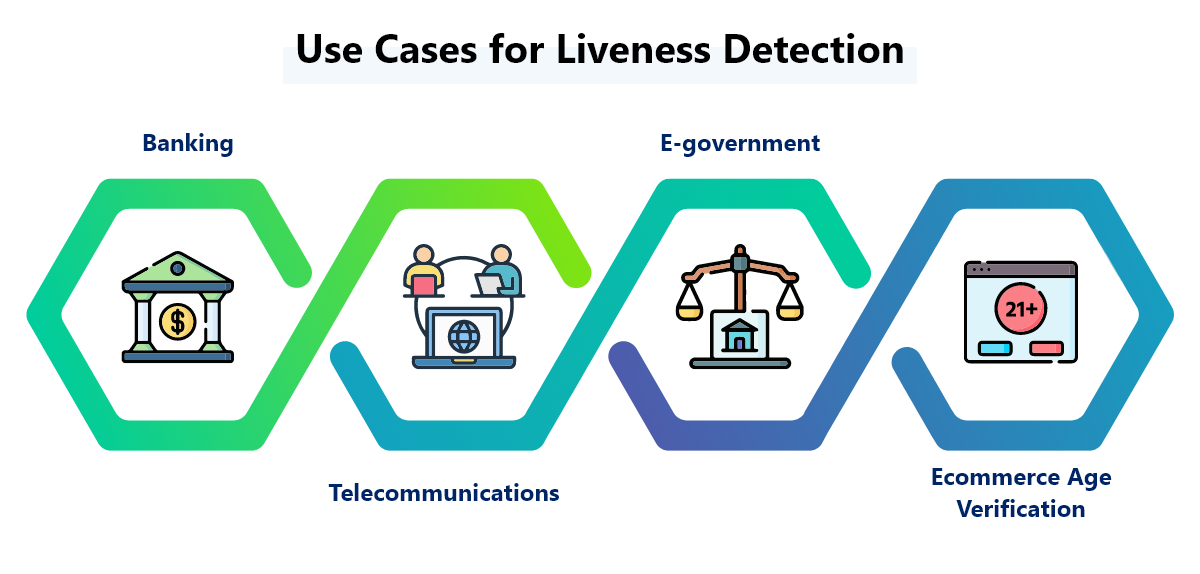How secure is your customer facial recognition system? What if a bad actor used a photo to “spoof” your customer? Would your system catch it?
Online transactions have come a long way. However, digital thieves have developed sophisticated ways to bypass them, like spoofing. And that’s why liveness detection is necessary.
Liveness detection refers to technology that confirms the user is a real, live person. It detects eye movements, head rotation, and uses 3D depth perception to determine that the user is there and not a photograph.
The result: Improved security and a significant reduction in deep-fake and spoofing attacks. For businesses, liveness detection is an important tool for online age verification systems. It builds trust, protects your customers, and is an effective digital fraud prevention tool.
So, how does liveness detection work? Buckle up, we’re about to explore what it is and how businesses can start using liveness detection for ID verifications.

What Is Liveness Detection?

Many online age verification systems use photo authentication. You provide your driver’s license, and then take a photo, which is verified against your ID photo.
Liveness detection, or spoof detection, systems take this a step further. While taking a photo, a liveness check is performed that uses visual evidence to ensure you aren’t taking a photo of a photo. You might be asked to move the camera, for example, to provide a 3D representation, which helps confirm that you are a real, live person. Some benefits include:
- Combats spoofing: Attempts to catch fake facial representations like photos, videos, or masks.
- Multiple techniques: Analyzes eye movement, head rotation, 3D depth perception, and even subtle facial expressions to verify liveness.
- Safeguards sensitive data: Protects users’ personal information.
Facial vs Document Liveness Detection
Liveness detection techniques can be used to confirm both face scans and documents.
- Face Liveness Detection – This technique checks if a photo is real and being taken live. It detects eye movements, head rotation, and even facial cues.
- Document Liveness Detection – This technique verifies if a document being presented is a live, physical copy, and not a fake or photocopied. Document liveness checks verify holograms, embossing, and other cues to verify the document is present.
Liveness Detection vs Selfie Verification
While biometric authentication with liveness detection is a crucial part of self-verification, they are not the same. Here’s how they differ:
Liveness detection
Liveness detection confirms if the user is present. For example, if you were to blink or turn your head slightly while using a banking app, liveness detection would pick these cues up. In short, liveness detection confirms that the user is real, not a fake representation.
Selfie verification
Selfie verification matches the presented facial image to an existing one on file. This technique uses facial recognition technology to verify and authenticate the selfie image. Selfie verification confirms the person’s identity by matching their face to a known reference.
Typically, these two systems work together. A selfie is taken, while liveness checks are performed to ensure the user is real. Then, the selfie is verified against a database image or ID photo.
Passive vs Active Liveness Detection: Key Differences
There are two main types of Liveness detection: passive and active. Both aim to ensure you’re not a cleverly crafted mask or a well-timed screenshot, but they take different approaches:
Passive Liveness Detection
Passive detection works seamlessly in the background, analyzing facial features like skin texture and subtle involuntary movements like blinking.
This makes passive systems more user-friendly. The verification doesn’t require the user to move their head or follow instructions during the selfie. However, although it’s more user-friendly, it’s slightly less accurate against advanced spoofing attacks.
Active Liveness Detection
With active systems, the user is prompted to perform specific actions like blinking, nodding, or turning their head. This allows the systems to perform more in-depth 3D checks and is much more difficult for nefarious users to spoof.
The only real drawback is that active systems may be less user-friendly. This can result in poor onboarding experiences and may reduce conversion rates.
Which Approach Is Right?
The best method for your application depends on factors like:
- Security Level: High-risk applications like banking might prioritize active methods for maximum security.
- User Experience: For smoother interactions, passive liveness detection might be preferred in less sensitive contexts.
- Technical Feasibility: Consider the resources and infrastructure available to implement each method effectively.
Ultimately, both passive and active liveness detection secure digital interactions. However, active methods may not be necessary for less-secure transactions, like ecommerce or age verification.

Use Cases for Liveness Detection
Liveness detection isn’t just for high-security financial institutions anymore. In fact, the Face ID for iPhone is an example of a liveness detection system. Today, this anti-spoofing tool is being used in a variety of industries. Here are some of the most common use cases:
1. Banking: Imagine opening a new bank account without physically visiting a branch. Liveness detection during the digital onboarding process verifies you’re a real person, not a masked individual or a deepfake, preventing fraudulent account creation.
2. Telecommunications: Signing up for a new phone plan online? Liveness detection ensures the person presenting the ID and selfie is indeed the authorized individual, combating identity theft and SIM card fraud.
3. E-government: From accessing sensitive government documents to registering to vote online, liveness detection adds a layer of security, confirming the user’s physical presence and preventing unauthorized access to critical information.
4. Ecommerce Age Verification: Protecting children online takes priority. Age-gated websites can leverage liveness detection to verify a user’s age during checkout to restrict access to age-inappropriate content or products.
Beyond these examples, liveness detection is making its mark in:
- Social media: Combating fake accounts and impersonation by verifying users during registration and login attempts.
- Access control: Securing physical spaces with liveness detection at entry points, ensuring authorized individuals gain access.
- Travel and hospitality: Streamlining airport security checks or hotel check-ins with secure, contactless liveness verification.
What Are the Challenges of Liveness Verification?
Modern liveness detection systems provide formidable security. They eliminate the threat of many simple spoofing or presentation attacks. However, this type of system does have limitations.
Here are three key areas where continuous improvement is crucial:
1. Spoofing Attacks
Even the most sophisticated systems can be outsmarted by determined attackers. Deepfake attacks, high-quality masks, and even replayed videos pose constant threats.
Fortunately, liveness detection techniques are constantly evolving. Most modern systems use depth sensing, liveness indexes based on physiological responses, and even analyzing subtle eye movements and micro-expressions to stay ahead of the curve.
2. User Experience
The ideal liveness detection solution should be seamless and unobtrusive. While active methods requiring head nods or specific actions offer high security, they can disrupt user flow and be frustrating.
Ultimately, you should strive for balancing robust verification and user-friendliness. Passive methods that work in the background are gaining traction, offering a balance between security and convenience. And they’re advancing quickly thanks to AI identity verification methods.
3. Presentation Attacks
Presentation attacks involve cleverly crafted objects presented to the system. For instance, 3D printed facial models or high-resolution photos pose unique challenges.
Addressing this requires advancement in liveness detection algorithms. Plus, diverse techniques are needed to analyze facial features, document holograms, movement patterns, and even skin texture variations.
Wrapping Up
From safeguarding our financial accounts to improving age verification online, liveness detection is a powerful tool for business. That’s especially true as spoofing and deepfake attacks advance. In fact, a company just lost $26 million due to a deepfake attack.
Ultimately, liveness detection systems continue to advance. They’re more user-friendly and seamless than ever. And businesses can incorporate them into onboarding to protect their customers and their bottom line.
Interested in liveness detection in your business? FTx Identity offers a state-of-the-art customer verification platform with liveness detection. Our software integrates easily into user onboarding and checkouts to verify age and ID in minutes. Request a demo today.
